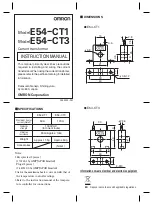
76
Mercury Reference Manual
05-4446A01, Rev. E
3.5.2 Serial Port Configuration
Overview
The transceiver includes an embedded serial device server that provides
transparent encapsulation over IP. In this capacity, it acts as a gateway
between serial and IP devices. Two common scenarios are PC applica-
tions using IP to talk to remote devices, and serial PC applications
talking to remote serial devices over an IP network. These data services
are available from the
COM1
port of the radio.
COM1 Port
—Dual
Purpose Capability
The
COM1
port is used as a local console connection point and to pass
serial data with an external device. Setting the
COM1
port status to
Enable
prevents access to the Management System (MS) through this port.
However, the MS can still be accessed via the LAN port using Telnet or
a web browser.
NOTE:
To restore the
COM1
port to support Management System
services, connect a terminal to the port, select the proper baud
rate (115,200 is default), and enter an escape sequence (
+++
) to
reset it to the console mode.
There is a configuration parameter for the
console baud rate
and
another parameter for the
serial data baud rate
. These items can
be different, so when switching out of data mode to console
mode, the port might also change its baud rate.
TCP vs. UDP
TCP and UDP services are used by the transceiver’s embedded serial
device server. TCP provides a connection-oriented link with end-to-end
acknowledgment of data, but with some added overhead. UDP provides
a connectionless best-effort delivery service with no acknowledgment.
Most polled protocols are best served by UDP service as the protocol
itself has built-in error recovery mechanisms. UDP provides the needed
multidrop operation by means of multicast addressing.
On the other hand, TCP services are best suited for applications without
a recovery mechanism (error-correction) and must have the guaranteed
delivery that TCP provides in spite of the extra overhead. The
IP-to-Serial Application Example on Page 83
shows how to do this.
Serial Encapsulation
Transparent encapsulation, or IP tunneling, provides a mechanism to
encapsulate serial data in an IP envelope. All bytes received through the
serial port are put into the data portion of a TCP or UDP packet (TCP or
UDP are user-configurable options). In the same manner, all data bytes
received in a TCP or UDP packet are output through the serial port.
When the radio receives data through the serial port, it is buffered until
the packet is received completely. There are two events that signal an
end-of-packet to the radio: a period of time since the last byte was
Содержание Mercury 900
Страница 9: ...viii Mercury Reference Manual 05 4446A01 Rev E...
Страница 11: ...2 Mercury Reference Manual 05 4446A01 Rev E...
Страница 31: ...22 Mercury Reference Manual 05 4446A01 Rev E...
Страница 155: ...146 Mercury Reference Manual 05 4446A01 Rev E...
Страница 157: ...148 Mercury Reference Manual 05 4446A01 Rev E...
Страница 171: ...162 Mercury Reference Manual 05 4446A01 Rev E...
Страница 185: ...176 Mercury Reference Manual 05 4446A01 Rev E...
Страница 201: ...192 Mercury Reference Manual 05 4446A01 Rev E...
Страница 211: ...GE MDS LLC Rochester NY 14620 General Business 1 585 242 9600 FAX 1 585 242 9620 Web www GEmds com 175 Science Parkway...
















































